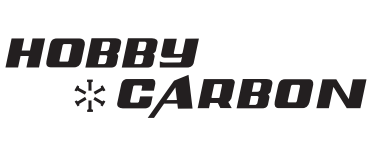
Privacy statement: Your privacy is very important to Us. Our company promises not to disclose your personal information to any external company with out your explicit permission.

Aluminum alloy fasteners details
Aluminum fasteners weigh 1/3 of the weight of their similar steel fasteners. The strength characteristics of such frequently used alloys are surprisingly good. In fact, in terms of strength to mass ratio, aluminum fasteners are higher than fasteners made from any other trade-trade material.
Aluminum is not magnetizable. The thermal conductivity of aluminum is very good, about 2/3 of the copper conduction performance of the same volume. Aluminum has good processing characteristics and is easy to cold form and hot forge.
Aluminum has sufficient corrosion resistance under normal conditions. And when the expected exposure is very harsh, its corrosion resistance can be greatly improved by anodizing. Anode treatment is an electromachining process that forms an oxide film on a metal surface. Anode treatment not only enhances corrosion resistance, but also enhances protection against wear and scratches. Anode plating has a wide variety of colors for decorative and identification purposes. In atmospheric corrosion, aluminum forms a light gray oxide film on the surface. These corrosion products do not contaminate the surface of the aluminum, or spread to adjacent surfaces, and it does not differ from many other metals in corrosion.
1, aluminum alloy fasteners
The tensile strength of pure aluminum is about 13,000 psi, and it is possible to increase the strength by a small amount of alloying elements. The aluminum alloys of 2XXX, 6XXX, and 7XXX have a good effect on heat treatment. Therefore, virtually all threaded fasteners used for load transfer are made of these three types of aluminum alloys. There are four aluminum alloys that are almost exclusively used.
The 2024-T4 aluminum alloy (containing 4.5% copper, 1.6% manganese, 1.5% magnesium, and the balance aluminum) is a heavy duty alloy. It achieves a balance between strength, corrosion resistance, manufacturability and economy, and is widely used in the manufacture of threaded fasteners.
Bolts, screws and studs made of 7075-T73 aluminum alloy (1.6% copper, 2.5% manganese, 0.3% chromium, and the rest aluminum) have a slight improvement in strength, and due to " T73" special heat treatment process, which can prevent stress corrosion to a large extent. But the high cost makes its popularity limited.
6061-T6 aluminum alloy (containing 0.6% silicon, 0.25% copper, 1% magnesium, 0.2% chromium, and the rest aluminum) can be used to design internal and external thread fasteners with higher requirements for corrosion resistance. .
The 6062-T9 aluminum alloy (containing 0.6% silicon, 0.25% copper, 1% magnesium, 0.09% chromium, 0.5% lead, and the balance aluminum) is almost exclusively designed for the nut. This alloy is stronger than the 6061-T6 aluminum alloy and has relatively good corrosion resistance.
The full thickness nut made of 6062-T9 aluminum alloy has sufficient strength to match the bolts made of 2024-T4 or 7075-T73 aluminum alloy. Machine screws, nuts and other 1/4" and smaller nuts are made of 2024-T4 aluminum alloy.
The four aluminum alloys already mentioned are the most widely used in the manufacture of thread-loaded fasteners, while other aluminum alloys are used in the manufacture of other types of fasteners. Small solids, half tubes and blind rivets are made of 1100-F, 5052-F, 5056-F aluminum alloys, respectively. The heat-treatable 2017-T4, 2117-T4, 2024-T4, 6061-T6 aluminum alloy and the relatively newly developed 7075-T73 aluminum alloy have superior shear strength and do not require “pre-drive treatment”. Can be driven.
Flat washers are usually made of aluminized 2024-T4 alloy; coil spring washers are usually made of 7075-T6 alloy; tapping screws are made of 7075-T6 alloy; and self-tapping screws are obtained by anodizing of the same material alloy. The 2011-T3 aluminum alloy (containing 5.5% copper, 0.5% lead, 0.5% niobium, and the balance aluminum) can be used to make parts for thread cutting machines.
2, aluminum fastener labels
There are approximately 100 labels for aluminum alloys, each using a four-code labeling system. The first of the four digits is used to identify the basic alloy type; the last two are used to identify different alloys in the same alloy; and the second is used to identify improved alloys. For example, the alloy of 1XXX is mainly pure aluminum; the alloy of 2XXX uses copper as its main alloying element; the alloy of 5XXX contains magnesium; the alloy of 6XXX contains magnesium and silicon; and the alloy of 7XXX is alloy of aluminum and zinc.
The subscript of the alloy number is a letter or number used to identify tempering and metallurgical treatment methods. The letters indicate basic metallurgical processing and the numbers indicate the processing steps after processing. For example: "O" means complete annealing; "F" means prefabrication; "T" means heat treatment; "T3" in heat treatment tempering means cooling after hot melt; "T4" means natural cooling after hot melting to a steady state; T9" means that after hot melting, it is manually cooled and then cold worked. “T73” is a special heat treatment method developed by American Aluminum Corporation (ALCOA).
November 14, 2024
October 31, 2024
Mail a questo fornitore
November 14, 2024
October 31, 2024

Privacy statement: Your privacy is very important to Us. Our company promises not to disclose your personal information to any external company with out your explicit permission.

Fill in more information so that we can get in touch with you faster
Privacy statement: Your privacy is very important to Us. Our company promises not to disclose your personal information to any external company with out your explicit permission.